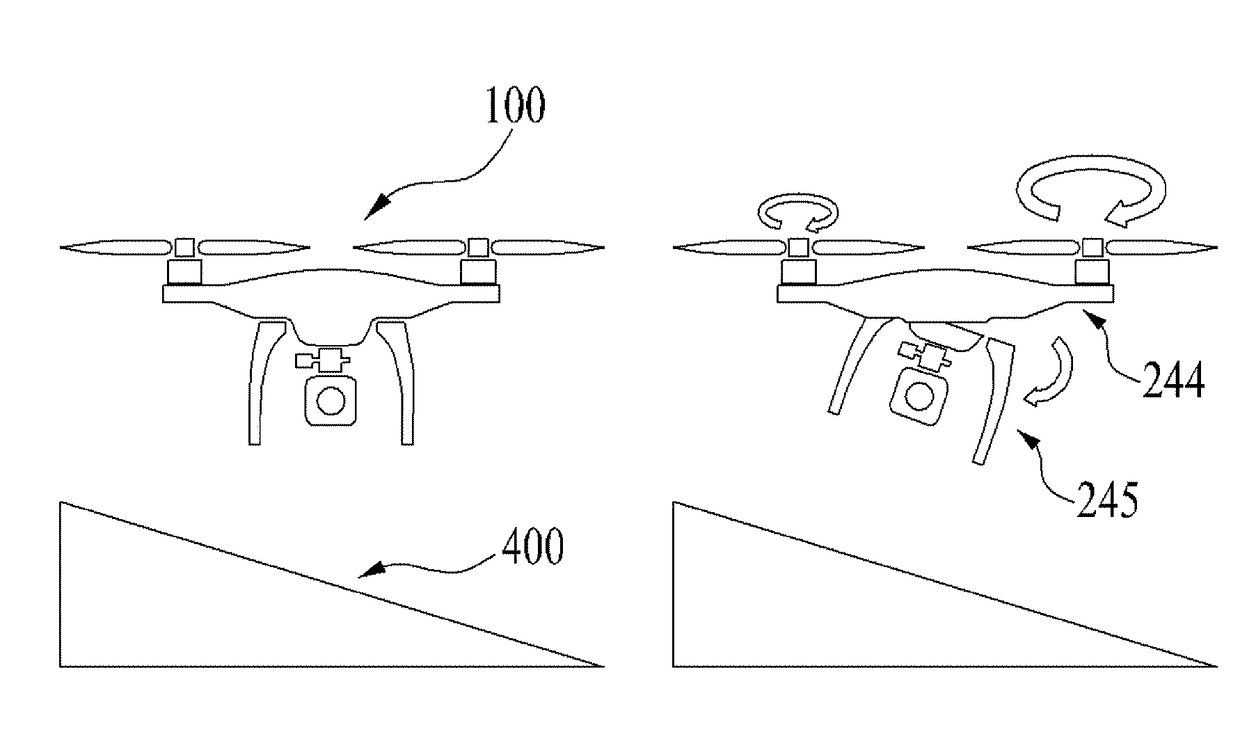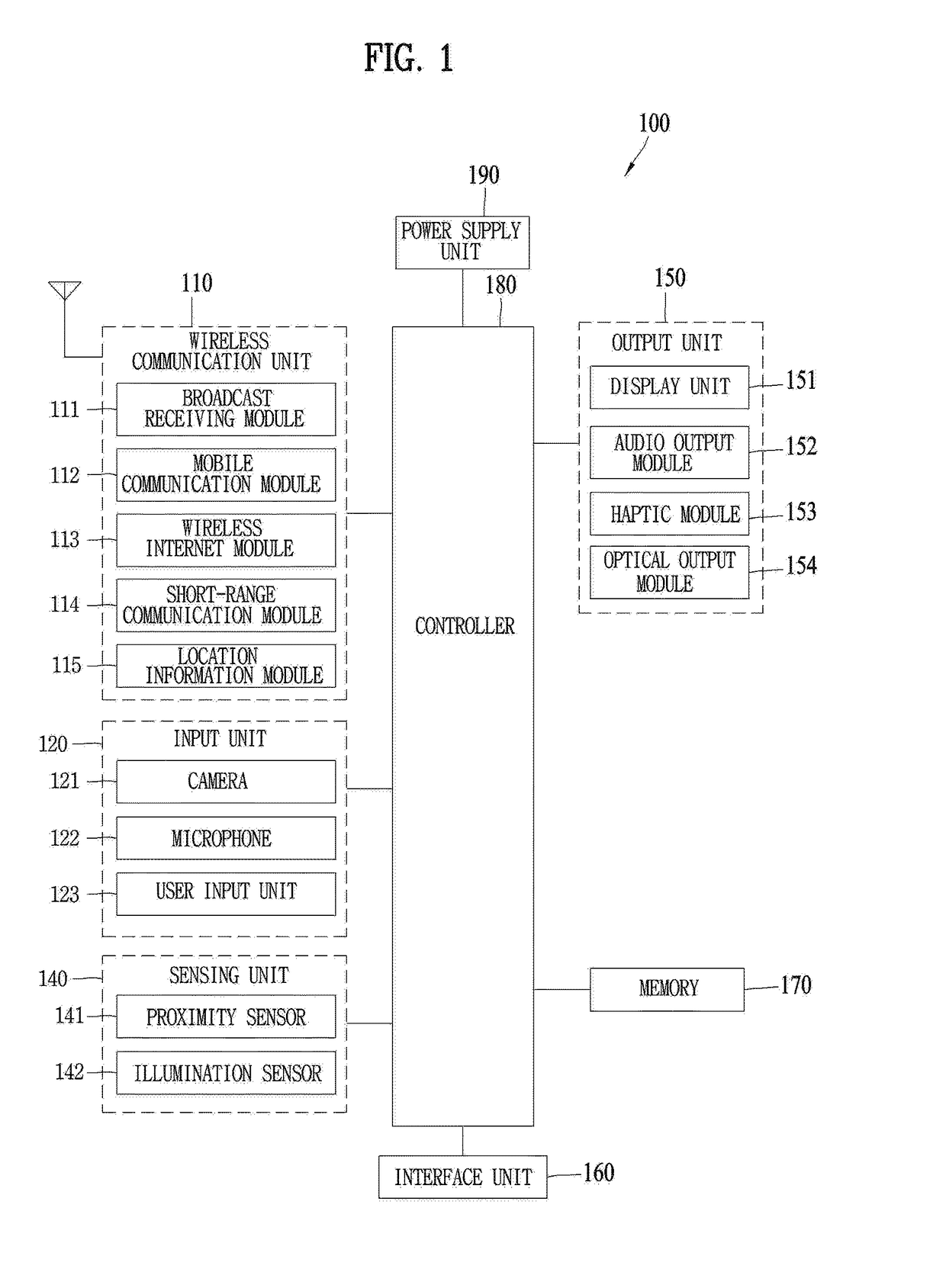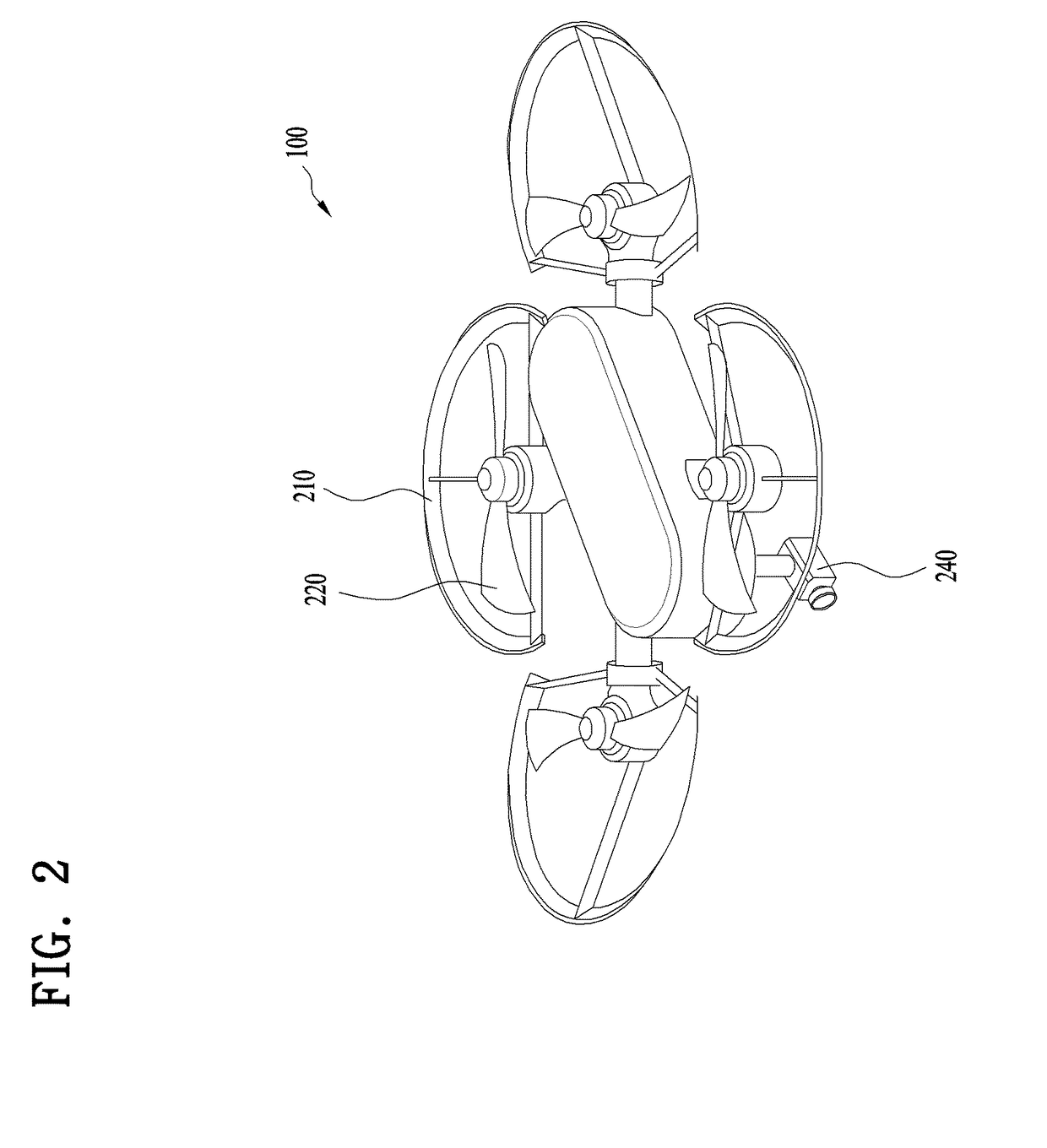Drone
a drone and flying technology, applied in the field of drones, can solve the problems of drones destroying the drone, drones may overturn, and require a more delicate speed control
- Summary
- Abstract
- Description
- Claims
- Application Information
AI Technical Summary
Benefits of technology
Problems solved by technology
Method used
Image
Examples
first embodiment
[0148]FIG. 10 (a) is a lateral view diagram of a drone 100 and a ground 400, and FIG. 10 (b) is a top view diagram of a drone 100 and a ground 400.
[0149]If the drone 100 computes that it is dangerous to land at a current point, i.e., if a difference in a distance to a vertically downward ground 400 measured by a plurality of the ground sensing units 222 exceeds a first threshold, the controller 180 controls the power driving unit 230 to hover in the sky by holding the landing of the drone 100 and or land the drone 100 in a manner of changing a bearing into another point (i.e., a horizontal direction) by maintaining a hovering state, moving in a predetermined distance, and then landing.
[0150]In this case, a vertically downward direction may mean a downward direction with reference to the drone 100 or an earth center direction. And, ‘hovering’ may mean ‘stopping by maintaining an altitude’ or ‘moving by changing a bearing only’.
[0151]While moving in a bearing along a first path to a s...
second embodiment
[0157]FIG. 11 (a), FIG. 11 (b) and FIG. 11 (c) are diagrams for examples of giving a feedback to a user when a drone 100 is unable to land at a first area.
[0158]If a height difference of a first region measured by the drone 100 exceeds a first threshold, the drone 100 may perform a landing impossibility notification while making a flight by maintaining a state of maintaining a predetermined height altitude in the first region. The landing impossibility notification may include a visual notification in case of a presence of a display, a sound notification through a speaker or the like, or a vibration notification.
[0159]For instance, as a signal of impossibility of a landing of the drone 100, as shown in FIG. 11 (a), it may be able to give a bouncing feedback in a manner of bouncing over a drone located altitude and then descending at an original altitude. Through the bouncing feedback, a user can be more intuitively aware that the drone 100 is able to land at the first region.
[0160]T...
third embodiment
[0164]FIG. 12 (a) is a lateral view diagram for one example of a drone 100 and a ground 400, and FIG. 12 (b) is a top view diagram for one example of a drone 100 and a ground 400.
[0165]Although a height difference for a point of a first region measured by the drone 100 exceeds a first threshold, it may be possible for the drone 100 to land on the ground 400.
[0166]A plurality of seating legs 240 can be provided to locations corresponding to a plurality of propellers 221 or sensors in a manner that the number of the seating legs 240 is set equal to that of the propellers 221 or the sensors of the ground sensing unit 222, respectively. The corresponding location may location on the same line in a vertical direction of the drone 100.
[0167]If a plurality of seating legs 240 provided to come in contact with the ground 400 are provided to the drone 100, although a height difference between a point 4001 on which one seating leg 2401 will be seated and a point 4002 on which the other seating...
PUM
 Login to View More
Login to View More Abstract
Description
Claims
Application Information
 Login to View More
Login to View More - R&D
- Intellectual Property
- Life Sciences
- Materials
- Tech Scout
- Unparalleled Data Quality
- Higher Quality Content
- 60% Fewer Hallucinations
Browse by: Latest US Patents, China's latest patents, Technical Efficacy Thesaurus, Application Domain, Technology Topic, Popular Technical Reports.
© 2025 PatSnap. All rights reserved.Legal|Privacy policy|Modern Slavery Act Transparency Statement|Sitemap|About US| Contact US: help@patsnap.com



